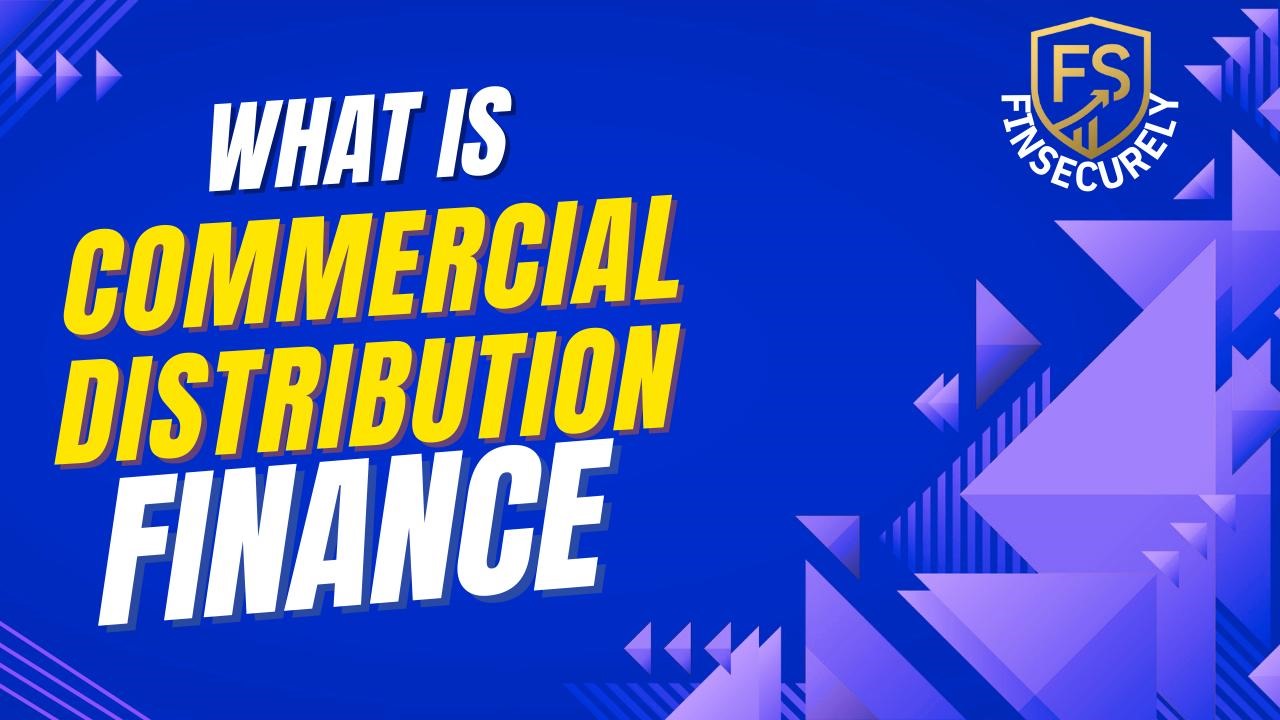Introduction: A Personal Story
When I started out in business, one of the biggest challenges was inventory. I had customers waiting, but my bank account couldn’t handle paying upfront for all the stock. I remember staring at catalogs, wishing I could fill my shelves without draining every cent I had. That’s when I first heard the term: What is Commercial Distribution Finance.
- Introduction: A Personal Story
- What is Commercial Distribution Finance?
- How Does Distribution Financing Work?
- What is Commercial Distribution Finance Example
- Types of Distribution Finance Products
- What is Commercial Distribution Finance Wells Fargo
- Benefits of Commercial Distribution Funding
- Wholesale Distribution Financing Options
- Distribution Finance vs Traditional Loans
- Challenges and Risks
- Distribution Business Funding Requirements
- Future of Distribution Financing
- Wrapping It Up
- FAQs
At first, it sounded like complicated banking jargon. But when I dug deeper, I realized it’s simply a smart way for dealers and distributors to finance their inventory, manage cash flow, and keep business running smoothly.
In this article, we’re going to explore this concept in detail, with stories, examples, and practical advice. By the end, you’ll know exactly what it is, how it works, and whether it could help your own business.
What is Commercial Distribution Finance?
The commercial distribution finance definition is simple: it’s a funding solution that allows distributors or dealers to purchase and stock products without paying upfront. Instead of emptying their bank accounts, they get financing tied directly to the inventory or receivables.
Think of it as a working capital loan that is designed specifically for distribution businesses. Unlike a traditional bank loan, where you borrow a lump sum and pay interest, commercial distribution finance lines up with the rhythm of your sales cycle.
How Does Distribution Financing Work?
Here’s the everyday version of how does distribution financing work:
- A distributor places an order with a manufacturer.
- Instead of paying upfront, a finance company covers the cost.
- The distributor gets the goods, stocks them, and starts selling.
- As sales happen, the distributor pays back the financing.
It’s almost like a bridge financing commercial tool; it bridges the gap between stocking inventory and receiving customer payments.
What is Commercial Distribution Finance Example
Let me give you a practical example of what commercial distribution finance is.
Imagine a local car dealership. Cars aren’t cheap, and the dealer can’t afford to buy 50 vehicles upfront. With distribution finance, the lender pays the manufacturer, and the dealer stocks the cars on the lot. Customers come in, buy cars, and the dealer pays back the financing from the sales revenue.
No empty showroom. No sleepless nights about cash flow.
Types of Distribution Finance Products
There isn’t just one form of distribution finance. Different businesses use different setups depending on their needs. Here are the types of distribution finance products:
- Inventory Funding: Get financing to buy and hold stock until it sells.
- Accounts Receivable Financing: Borrow against unpaid invoices.
- Floorplan Financing: Perfect for auto dealers and equipment sellers stocking large items.
- Vendor Financing Programs: Manufacturers directly support distributors with credit.
- Revolving Credit Lines: Flexible funding for repeated purchases.
Each option fits a different scenario, but they all share the same goal: give distributors breathing room.
What is Commercial Distribution Finance Wells Fargo
If you’ve ever searched what is commercial distribution finance Wells Fargo, you’ll know they’re one of the biggest names in this space. They have supported thousands of dealers in industries like agriculture, electronics, and industrial equipment.
The key takeaway from Wells Fargo’s programs is how tailored they are to distribution. They don’t just give out loans; they offer distributor financing programs that sync with sales patterns, inventory turnover, and seasonal demand.
Benefits of Commercial Distribution Funding
Speaking from my own journey, the benefits of commercial distribution funding can be a game changer:
- Better Cash Flow: You don’t pay upfront for stock.
- Faster Growth: Expand into new markets without waiting for capital.
- Flexibility: Repay as sales come in, not on rigid schedules.
- Risk Reduction: With proper financing, you don’t have to overextend personal funds.
- Stronger Supplier Relationships: Manufacturers are more willing to work with distributors who have financing in place.
I still remember the first season I had fully stocked shelves thanks to financing. Sales soared, and I finally felt like I was running a “real” business.
Wholesale Distribution Financing Options
One of the best things about this kind of funding is the range of wholesale distribution financing options. No matter if you sell electronics, furniture, farm tools, or clothes, there’s usually a financing program made for your needs.
Some businesses lean on asset based lending (using stock as collateral), while others use merchant cash advances if they need flexibility. The beauty is that you can pick what works best for your situation.
Distribution Finance vs Traditional Loans
If you’re comparing distribution finance vs traditional loans, here’s a simple way to look at it:
| Aspect | Distribution Finance | Traditional Loan |
| Collateral | Inventory or receivables | Assets, property |
| Repayment | Linked to sales | Fixed schedule |
| Flexibility | High | Low |
| Use Case | Stocking goods | General funding |
Challenges and Risks
Of course, nothing in finance comes without risk. A few challenges you should keep in mind are:
- Inventory Risk: If products don’t sell, you still owe.
- Eligibility Requirements: Some lenders look for steady sales or proven history.
- Costs: Rates can vary, so always read terms carefully.
The good news? With proper planning, these risks are manageable.
Distribution Business Funding Requirements
So what about distribution business funding requirements? Generally, lenders look for:
- Proof of a functioning distribution business.
- Inventory or receivables they can secure financing against.
- Steady sales flow or seasonal projections.
- Clean financial statements.
It’s less intimidating than it sounds; many small businesses qualify once they’re consistent.
Future of Distribution Financing
Looking ahead, the future of commercial finance for distributors will rely more on technology. Real time tracking of inventory, automated payments, and digital applications are already streamlining commercial distribution loan applications.
Some lenders are even using data from IoT devices and AI analytics to approve loans faster and reduce risk.
Wrapping It Up
When people ask me, “So really, what is Commercial Distribution Finance?”, I tell them: it’s like a partner that helps you stock your shelves without wiping out your wallet. It’s not just a loan, it’s a lifeline for growth.
From inventory funding to accounts receivable financing, from wholesale funding options to bridge financing commercial, this tool gives businesses the freedom to grow without waiting for cash flow to catch up.
And trust me, as someone who once felt stuck between empty shelves and big dreams, I can say: learning how to use distribution finance was one of the smartest moves I ever made.
FAQs
1. What is commercial distribution finance eligibility?
Eligibility usually depends on steady sales, quality inventory, and basic financial stability.
2. How does it differ from trade finance solutions?
Trade finance deals with import/export, while distribution finance focuses on stocking and selling goods locally.
3. Can small businesses apply for commercial distribution loan applications?
Yes, many lenders welcome small distributors as long as they meet basic requirements.
4. Is there a PDF on commercial distribution finance that I can download?
Yes, many banks and finance providers publish PDF guides searching online will give you ready to use resources.
5. Why choose distribution finance over traditional loans?
Because it aligns with sales cycles, offering more flexibility and less strain on cash flow.
Checkout our latest post: How Do Muslims Finance Cars The Halal Way









